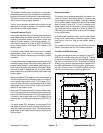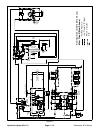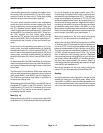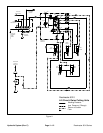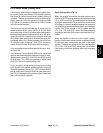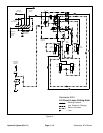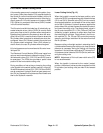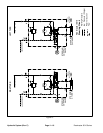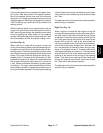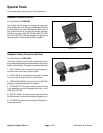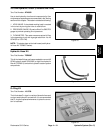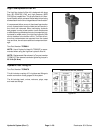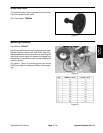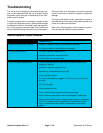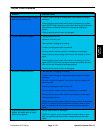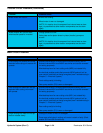
Reelmaster 5010 Series Hydraulic System (Rev. C)Page 4 -- 17
Steering Circuit
A four section gear pump is coupled to the piston (trac-
tion) pump. Gear pump section P3 supplies hydraulic
flow to the steering control valve and for the traction
charge circuit. The gear pump takes its suction from the
hydraulicreservoir.Steeringcircuit pressureislimitedto
1000 PSI (69 bar) by a relief valve (R10) located in the
steering control.
With the steering wheel in the neutral position and the
engine running, flow enters the steering control valve at
the P port and goes through the s teering control spool
valve, by--passing the r otary meter (V1) and steering
cylinder.Flowleavesthecontrolvalve throughtheTport
to the transmission oil filter and traction charge circuit.
Left Turn (Fig. 13)
When a left turn is made with the engine running, the
turning of the steering wheel positions the steering con-
trol spool valve so that flow is directed through the bot-
tomofthespool.Flowenteringthesteeringcontrolvalve
at the P portgoes through the spool and is routed to two
places. First, most of the flow through the v alve is by--
passed out the T port back to the transmission oil filter
andtractionchargecircuit. Second,theremainderofthe
flow is drawn through the rotary meter (V1) and out the
L port. Pressure contracts the steering cylinder piston
for a left turn. The rotary meter ensures that the oil flow
to the steering cylinder is proportional to the amount of
turning on the steering wheel. Fluid leaving the steering
cylinder flows back through the steering control spool
valve and then out of the steering control valve through
the T port.
The steeringcontrol valve returns to the neutralposition
when turning is completed.
Right Turn (Fig. 13)
When a right turn is made with the engine running, the
turning of the steering wheel positions the steering con-
trol spool valve so that flow is directed through the top
of the spool. Flow entering the steering c ontrol valve at
the P port goes through the spool and is routed to two
places. As in a left turn, most of the flow through the
valve is by--passed out the T port back to the transmis-
sion oil filter and traction charge circuit. Also like a left
turn, the remainder of the flow is drawn through rotary
meter (V1) but goes out port R. Pressure extends the
steering cylinder piston for aright turn. The rotary meter
ensures that the oil flow to the steering cylinder is pro-
portional to the amount of the turning on the steering
wheel. Fluid leaving the steering cylinder flows back
through the steering control spool valve then through
the T port and to the hydraulic reservoir.
The steeringcontrol valve returns to the neutralposition
when turning is completed.
Hydraulic
System



